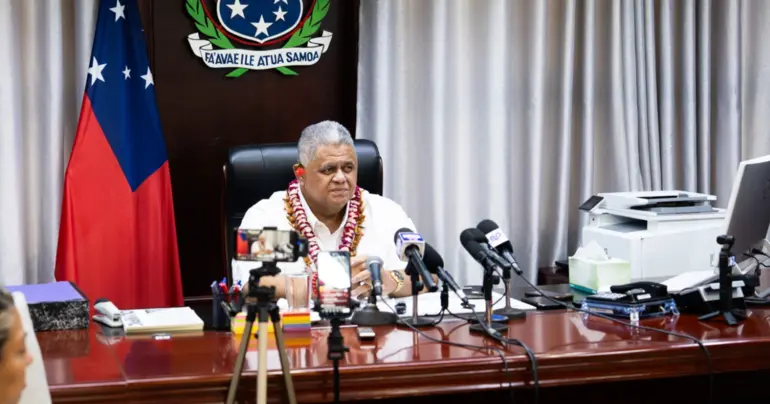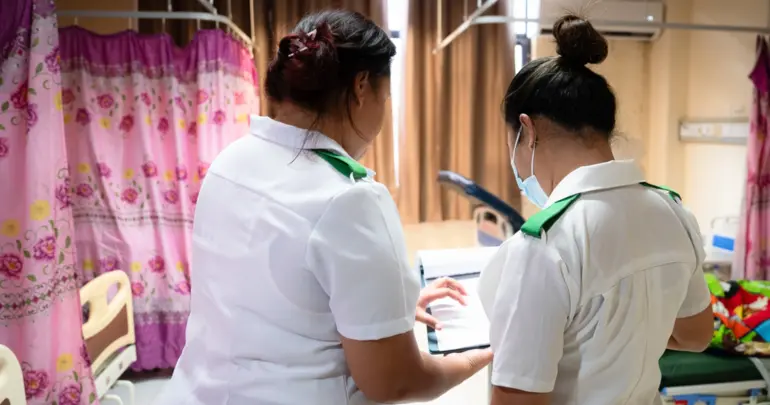Analysis: what robbed us of an Election Day win?
 By Sapeer Mayron
•
14 April 2021, 11:00PM
By Sapeer Mayron
•
14 April 2021, 11:00PM
For the first time in Samoa’s history, voters were offered a choice between two parties with two distinct ideologies and plans for the country’s future, instead of a suite of candidates that happened to be aligned with a group.
Where before, constituents were asked to choose who among their senior matai would best represent them in Parliament, last week many factored in the party flag behind that matai too.
But both the veteran Human Rights Protection Party (H.R.P.P.) and newcomers Faatuatua i le Atua Samoa ua Tasi (F.A.S.T.) Party may have undermined that message by fielding several candidates in many constituencies.
While F.A.S.T. largely operated as a party, asking voters to choose the F.A.S.T. banner and their candidate, H.R.P.P. still offered voters the choice of personality, distracting from the party goal of holding an overwhelming majority in Parliament.
According to independent analysis by the Samoa Observer, it cost them nine seats where more votes cast went to H.R.P.P., but spread to thinly to compete with their F.A.S.T. opposition.
What happened to H.R.P.P?
H.R.P.P., who in March predicted it would win anywhere between 42 and 47 of the 48 seats up for grabs this election, won 25 on Election Day.
With 106 candidates, they won 46,640 votes across the country, but with a seat-winning success rate of 23.58 per cent. On average their candidates won 440 votes to F.A.S.T.’s candidate average of 608.
In Faleata No.1, four H.R.P.P. candidates won 2,395 votes between them, but none on their own got more votes than F.A.S.T.’s Manuleleua Paletasala Tovale’s 1,181 votes.
In Aana Alofi No.4, the caretaker Minister of Communications and Information Technology Afamasaga Rico Tupai lost out by 211 votes.
But another H.R.P.P. candidate in the same constituency, Toleafoa Pili Asiata won 355 votes, and together they might have kept the seat in H.R.P.P. hands.
At Aiga i le Tai, F.A.S.T.’s Auapaau Aloitafua won against four H.R.P.P. candidates, who collectively won 53 per cent more votes than Auapaau (2,018 to his 1,314).
It was the same in Lefaga and Faleaseela, where four H.R.P.P. candidates lost to F.A.S.T.’s Masinalupe Makesi Masinalupe.
While 64 per cent of voters selected an H.R.P.P. candidate, their votes were spread too thin, leaving Masinalupe the victor.
F.A.S.T.’s Toelupe Poumulinuku Onesemo beat out four H.R.P.P. candidates in Falealii No.1, but in a rarer example, would have still beat the incumbent party outright even against one candidate, with their collective votes totalling 828 votes to Toelupe’s 1,114.
Had three-term incumbent Gatoloaifaana Amataga Gidlow been left to represent H.R.P.P. on her own in Faasaleleaga No.2, she may not have lost to newcomer Magele Sekati Fiaui by just 92 votes.
Two other H.R.P.P. candidates in the constituency won 327 votes between them.
And nearby in Gagaifomauga No.2, another four H.R.P.P. candidates lost to F.A.S.T.’s Vaele Paiaaua Sekuini when their collective votes far outweighed his.
Former lone Independent, turned F.A.S.T. ally, and now candidate, Olo Fiti Vaai, is holding onto his Salega No. 2 seat by 33 votes. But if the two H.R.P.P. candidates had been one, he would be 70 votes behind instead.
In Palauli No.3 there were seven candidates total: one from Tautua, two from F.A.S.T. and four from H.R.P.P.
With just one candidate H.R.P.P. may have won by a landslide, with their four candidate vote totals equalling 973 to the winner’s total of 384 (F.A.S.T.’s Lagaaia Tiatuuau Tufuga).
What happened to F.A.S.T.?
F.A.S.T. did exceptionally well with a 50 per cent success rate, but still lost out on two seats thanks to vote splitting, costing them a potentially more straightforward route to a majority and the right to form a Government.
At the end of Election Day the party had 25 seats, having contested in 43 of the 48 seats up for grabs.
The party offered two candidates each in seven constituencies. Of those, it cost them in two seats, where the total votes to F.A.S.T. outnumbered those to the opposition.
For Falealili No.2, Maiava Viiga Fuimaono and Veletaloola Lotomua Avauli’s combined totals of 541 votes would have placed them easily to beat H.R.P.P. winner Fuimaono Sameulu Atiifale, who won 471 votes.
And in Sagaga No.4, Tagaloatele Pasi Poloa and Tulimasealii Samasoni Pomare’s combined total would have put them 124 votes higher than the provisional winner from H.R.P.P., Tuisa Tasi Patea.
In Palauli No.2, the two F.A.S.T. candidates fared significantly better than the H.R.P.P. opposition, and combined would have left him 1,208 votes behind.
But in Sagaga No.2, Anomaa No.1, and Palauli No.3, the two F.A.S.T. candidates, even combined, did not come close enough to beating their H.R.P.P. opponents.
In Faasaleleaga No.4, one of the two candidates beat the other by a substantial amount and went on to win the seat (Tea To’oala Peato).
How reliable is the popular vote?
In jurisdictions where parties put up just one candidate in each constituency to vie for election, analysts often look at how many votes each party won across the country to get a sense of their popularity.
It’s a useful measure of how many people wanted a given party to win, whether they had their way in their constituency or not.
According to the Office of the Electoral Commission, H.R.P.P. won 55.04 per cent of the “popular vote” while F.A.S.T. won 36.8 per cent.
Tautua Samoa Party won 3.26 per cent of the votes while 4.63 per cent of the country opted for an Independent candidate.
But with such a large disparity between the number of candidates in each party, especially between H.R.P.P. and F.A.S.T., the Samoa Observer looked at the average of votes won per candidate instead.
Seen this way, H.R.P.P. won an average of 440 votes per candidate while F.A.S.T. won 608 votes per candidate.
In four constituencies in particular, that larger number of votes for H.R.P.P. is borne out, where they were the only party to contest for the seat.
In Vaimauga No.1, Aleipata Itupa i Luga, Faasaleleaga No.5 and Satupaitea, the party fielded two or three candidates.
Together, the three constituencies make up 9,245 registered voters, of which 65 per cent voted (about seven per cent of all votes counted so far).
 By Sapeer Mayron
•
14 April 2021, 11:00PM
By Sapeer Mayron
•
14 April 2021, 11:00PM











